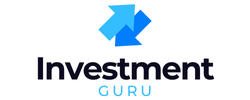With inflation pressuring wallets and interest rates fluctuating, 2025 continues to challenge borrowers juggling multiple credit card debts. Two of the most popular solutions are debt consolidation loans and balance transfers, but deciding which one works best depends on your credit score, debt level, and repayment discipline.
Understanding the differences can help you save thousands and reach financial freedom faster.
Table of Contents
What Is a Debt Consolidation Loan?
A debt consolidation loan is a fixed-term personal loan used to pay off multiple high-interest debts, such as credit cards or medical bills. Once the loan is approved and funded, your creditors are paid off, and you begin making monthly payments to the new lender.
Key features:
- Fixed APR (usually between 7%–35%)
- Terms range from 2–7 years
- Helps improve payment consistency
In 2025, many lenders are offering same-day funding with flexible terms—even for those with fair credit.
What Is a Balance Transfer?
A balance transfer involves moving debt from one or multiple credit cards to a new credit card that offers a 0% APR promotional period, typically lasting between 12 to 21 months.
Key features:
- Introductory APR (often 0%) for a set time
- 3%–5% transfer fee
- Fast and paperless process
It’s an excellent choice for people who can pay off debt quickly—before the promo expires.
Key Differences: Debt Consolidation Loan vs Balance Transfer
| Feature | Debt Consolidation Loan | Balance Transfer |
|---|---|---|
| Interest Type | Fixed APR | 0% intro, then variable |
| Duration | 2–7 years | 12–21 months (promo) |
| Credit Impact | Improves mix, lowers utilization | May increase utilization |
| Fees | Origination fee (0–8%) | Transfer fee (3–5%) |
| Best For | Medium to long-term payoff | Fast payoff, lower debt |
| Funding Time | 1–3 days | Instant (once card is active) |
How Interest Rates Differ in 2025

In 2025, average APRs on personal loans have slightly increased due to tighter Fed policies. Meanwhile, 0% APR balance transfer offers are still around but are often shorter and limited to high-credit-score applicants.
| Loan Type | Typical APR in 2025 |
|---|---|
| Debt Consolidation Loan | 7%–25% (based on credit) |
| Balance Transfer Card | 0% for 12–18 months, then 18%–29% |
Eligibility Requirements for Each Option
Debt Consolidation Loan:
- Credit score: 580+ (varies by lender)
- Proof of income required
- Some lenders allow co-signers
Balance Transfer:
- Typically requires 680+ FICO
- Low debt-to-income ratio
- Clean payment history
Pros of Debt Consolidation Loans
- Predictable payments
- Improves credit mix and history
- Easier to budget long term
- Potentially lower overall interest than credit cards
Cons of Debt Consolidation Loans
- Higher interest for poor credit
- Origination fees
- Temptation to rack up credit cards again
Pros of Balance Transfers
- 0% interest saves big in short term
- No installment loans added to report
- Fast and often online approval
- Can target specific high-balance cards
Cons of Balance Transfers
- Short repayment window
- High APR if balance isn’t paid in full
- Can hurt utilization ratio if limits are low
- Transfer fees can offset savings
Which One Impacts Credit Score More?
Both methods can influence your credit, but in different ways:
- Debt consolidation loans often improve your credit mix and history. On-time payments boost your score, and paying off revolving debt (like credit cards) can lower your utilization ratio.
- Balance transfers, while useful, can temporarily hurt your score if the credit limit on the new card is low—because it may appear that you’re using a large portion of that line immediately.
Overall, consolidation loans may lead to more long-term score improvement, while balance transfers can provide short-term relief if used carefully.
Fees and Costs to Consider
| Method | Common Fees |
|---|---|
| Debt Consolidation | Origination fees (0%–8%), interest over time |
| Balance Transfer | Transfer fee (3%–5%), post-promo interest (up to 29%) |
Even 0% APR offers aren’t always free. Always read the fine print and calculate your total repayment cost.
When to Choose a Debt Consolidation Loan

- You need 2–5 years to pay off debt
- You have a steady income
- You want fixed payments
- Your credit score is average or improving
When to Choose a Balance Transfer Card
- You can pay off debt in 12–18 months
- You qualify for a 0% APR card
- Your total debt is under $15,000
- You’re confident in self-discipline
Loan Term Flexibility vs Promotional Periods
Debt consolidation loans offer flexibility in repayment (2–7 years), while balance transfers offer a tight window with 0% interest. If you need time, go with the loan. If you can act fast, the card could save more.
How Each Affects Credit Utilization
Balance transfers might hurt your utilization if your new credit card limit is close to the amount transferred. Debt consolidation loans, being installment credit, don’t factor into utilization—a key reason they’re better for score recovery.
Real-World Scenarios: What Works Best?
Scenario 1: $10,000 Debt, FICO 720, Wants to Pay in 12 Months
→ Best Option: Balance Transfer Card
Scenario 2: $25,000 Debt, FICO 650, Needs 3 Years to Pay
→ Best Option: Debt Consolidation Loan
Scenario 3: $15,000 Debt, FICO 680, Can Pay in 15 Months
→ Best Option: Try Balance Transfer First, Backup Loan if Denied
Using Both Together: Is It Smart?
Yes—if done strategically. You can:
- Transfer part of your debt (0% APR)
- Consolidate the rest with a personal loan
This hybrid approach can reduce interest and increase approval chances—but only if you stay disciplined.
Best 2025 Debt Consolidation Loan Providers
- SoFi – Great for high credit scores
- Upstart – AI-driven for fair credit
- LightStream – No fees, fast funding
- Avant – Works with low scores
- Marcus by Goldman Sachs – No fees and trusted name
Best 0% Balance Transfer Cards of 2025
- Chase Slate Edge – Up to 18 months at 0%
- Citi Simplicity® – 21 months 0% APR
- Wells Fargo Reflect® – Longest intro period
- U.S. Bank Visa® Platinum – Minimal transfer fees
- BankAmericard® Credit Card – Good for moderate scores
How to Avoid Debt Consolidation Scams
- Avoid lenders requiring upfront payments
- Watch for vague loan terms or sky-high APRs
- Ensure the lender is licensed and verified
- Check reviews and Better Business Bureau (BBB) ratings
DIY vs Professional Help
You can handle consolidation on your own with discipline. But if:
- You’re overwhelmed
- Struggling with late payments
- Unsure what to choose
→ A credit counselor or debt expert can help you navigate your options safely.
Top Mistakes to Avoid in Debt Consolidation
- Ignoring total repayment cost
- Paying off cards then maxing them out again
- Missing payments on your new loan/card
- Not comparing multiple lenders/cards
Expert Tips for Fast Debt Repayment
- Make biweekly payments
- Automate minimum payments to avoid late fees
- Apply windfalls (bonuses, tax refunds) toward principal
- Track every payment with a spreadsheet or app
FAQs About Debt Consolidation Loan vs Balance Transfer
Which is safer—loan or transfer?
Loans offer fixed terms and structured payments—making them more stable for most borrowers.
What happens after the 0% period ends?
You’ll pay a high APR (18%–29%) on the remaining balance. Always plan to pay it off before that.
Can I qualify for both at the same time?
Yes—but doing so may hurt your credit score temporarily. Proceed carefully.
Will my credit score improve after consolidation?
If used wisely, yes—especially if you lower your utilization and make all payments on time.
Is there a credit score limit for these options?
Loans may accept scores as low as 580; balance transfers usually require 680+.
Conclusion
When comparing a debt consolidation loan vs balance transfer in 2025, it’s not about which is “better”—it’s about what fits you. If you need longer repayment and structured stability, a debt consolidation loan is the best bet. If you’re confident in your ability to repay quickly and qualify for a 0% APR offer, a balance transfer can save you hundreds in interest.
No matter which you choose, the key is discipline, planning, and using the savings to get debt-free—faster.
External Links:
- NerdWallet Balance Transfer Calculator
- FICO Score Breakdown
- FTC on Debt Relief Scams
- National Foundation for Credit Counseling

